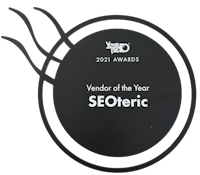Being Positionless — Marketing Lessons Beyond Harvard Business School
Marketing education often stresses clear brand positioning, a principle deeply rooted in traditional business teachings, including Harvard Business School. However, an article by Optimove, published on October 20, 2025, in Search Engine Land, challenges this view by exploring “being positionless.” This approach encourages marketers to adopt a fluid and adaptable stance rather than committing rigidly to a single market position. It highlights how this strategy can open new opportunities and better respond to shifting consumer behaviors and competitive dynamics.

“Being positionless” does not mean abandoning brand identity but embracing flexibility to navigate complex markets. The article offers practical guidance on when and how to implement dynamic positioning, measure its effectiveness, and avoid pitfalls that can undermine this approach. The full article is available at https://searchengineland.com/what-they-dont-teach-you-about-marketing-at-harvard-business-school-being-positionless-463457.
Rethinking Brand Strategy Through a Positionless Lens
Traditional marketing doctrine emphasizes staking out a clear, distinct position to succeed, encouraging companies to define a unique value proposition and communicate it consistently. The concept of “being positionless,” introduced by Optimove, challenges this by advocating a more fluid and responsive strategy. Instead of locking a brand into a single identity, marketers adapt positioning based on evolving consumer needs, competitive pressures, and market trends.
“Being positionless” — Optimove, Search Engine Land, October 20, 2025
This strategy involves maintaining a core brand essence while allowing flexibility in how it is expressed across contexts and customer segments. Dynamic positioning enables brands to engage diverse audiences effectively and pivot quickly when conditions shift. It embraces adaptability without sacrificing authenticity, helping brands stay relevant and competitive.
Implementing this approach requires shifting from static brand plans to ongoing experimentation and real-time responsiveness. Marketers must monitor consumer behavior and market signals closely, adjusting messaging, offers, and product features as needed. Investing in data analytics and agile marketing processes supports continuous learning and iteration. Measuring the impact through relevant KPIs ensures alignment with the audience while exploring new positioning opportunities.
However, this strategy demands caution. Without clear guardrails, brands risk diluting identity or confusing customers. Balancing flexibility with consistency is essential, ensuring every shift reinforces core values and long-term vision. Marketers should avoid overreacting to short-term trends or competitor moves, relying on thoughtful planning, disciplined execution, and measurement to harness the benefits of being positionless.
Implementing Positionless Marketing: Practical Steps and Strategic Considerations
Adopting a positionless approach requires rethinking workflows and embracing agility and continuous adaptation. Moving away from segmented teams toward integrated teams managing the entire campaign lifecycle allows campaigns to be prepared, launched, and optimized in real time. This enables swift responses to audience behavior and market signals, turning data into immediate, actionable strategies.
Effective dynamic positioning depends on three core capabilities: data power, creative power, and optimization power. Data power involves leveraging instant audience insights and segmentation to tailor messaging precisely. Creative power benefits from AI tools that enable rapid content creation while maintaining brand consistency. Optimization power comes from automated testing and real-time measurement, allowing quick iteration and refinement based on performance. Together, these create a feedback loop supporting continuous learning and improvement.
Measurement plays a key role. Traditional KPIs may not capture the nuances of dynamic positioning, so marketers should track metrics reflecting agility and customer engagement over time. Indicators such as speed of campaign adjustments, effectiveness of personalized journeys, and success of ongoing experiments provide deeper insights into brand adaptability. This encourages a culture of experimentation where quick wins become reusable policies, maintaining clarity and consistency within flexibility.
Despite advantages, positionless marketing carries risks if not managed carefully. Without boundaries, brands may lose coherence or confuse audiences by shifting too frequently or inconsistently. Maintaining a strong core identity anchors all positioning changes, ensuring alignment with fundamental values. Marketers should avoid chasing every trend impulsively, prioritizing strategic adjustments supported by data and aligned with long-term goals. Balancing flexibility with discipline enables meaningful growth and relevance.
Frequently Asked Questions About Being Positionless
How can a brand maintain clarity while adopting a positionless strategy?
The key is distinguishing flexibility from inconsistency. Being positionless means holding onto a central essence that guides marketing efforts while allowing its expression to shift based on audience needs and market signals. Adaptability deepens relevance without causing confusion or diluting the foundational message.
What practical steps help implement fluid positioning?
Success depends on integrating real-time data analysis with creative agility. Marketers need systems capturing consumer behavior and market trends continuously, enabling rapid messaging and offer adjustments. AI-driven content creation and automated testing accelerate this process, turning insights into immediate actions. This cycle of learning and iteration keeps brands aligned with audiences while exploring new engagement opportunities.
What risks are associated with being positionless?
Without clear guardrails, brands may chase every trend or react impulsively, eroding trust and coherence. Establishing strategic boundaries rooted in long-term vision and values is essential. Prioritizing data-driven decisions and measured experimentation ensures each positioning shift reinforces authenticity and supports sustainable growth.
How should marketers measure the effectiveness of a positionless strategy?
Traditional metrics focused on static positioning may fall short. Instead, track indicators reflecting agility, such as speed of campaign adjustments, engagement across segments, and success rates of ongoing experiments. These metrics reveal how well the brand adapts and resonates over time, supporting continuous refinement and relevance.
Flexibility with Purpose in Modern Marketing
Positionless marketing invites brands to balance adaptability with a clear identity, responding thoughtfully to evolving consumer needs and market shifts without losing core essence. Leveraging real-time data, creative innovation, and continuous optimization helps engage audiences effectively while maintaining consistency and authenticity. Setting strategic boundaries and focusing on disciplined experimentation prevents inconsistency, turning flexibility into an advantage that drives growth and lasting relevance.
This post is based on the Search Engine Land article by Optimove (October 20, 2025). Read the original: https://searchengineland.com/what-they-dont-teach-you-about-harvard-business-school-being-positionless-463457













.png)

